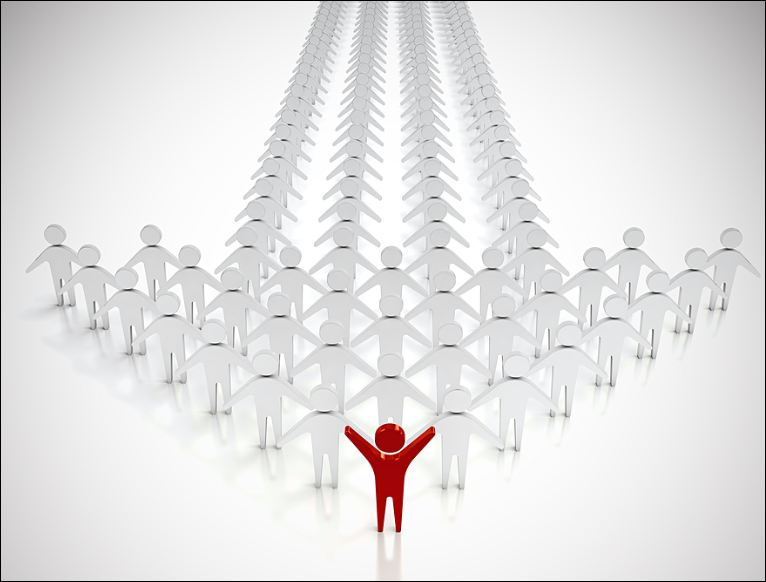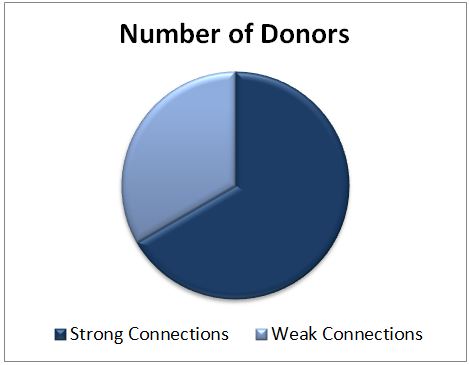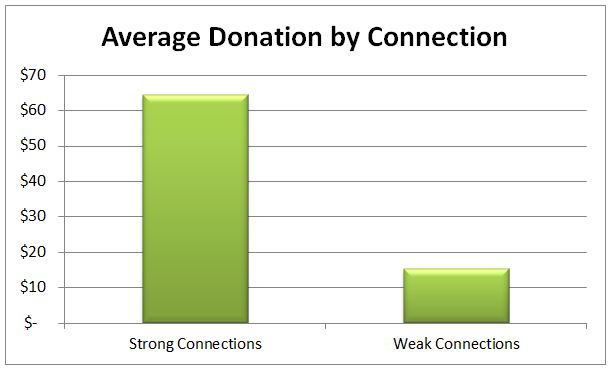As many of you know, I recently asked fans of {grow} to support a charitable cause through a post entitled “The kid who wanted a door for Christmas.”
I’d like to examine the results of this appeal as an example of “social influence” in action. What happens when a blogger asks his audience to do something beyond clicking a “like button?” What happens when a social media audience actually has to commit to an action and open a wallet? What can you learn from this example that will help you ignite your own business or charity?
The results from this blog post provide a fascinating lesson and case study:
The business situation
Asking for money on the Internet is a notoriously difficult proposition. In short, it usually doesn’t work.
I document this extensively in my book Return On Influence and point to several examples where even celebrity-level influencers could not move the needle and create real action through tweets to their vast audiences.
The reason for this failure is that most social media connections are very weak relational links. Sure, we might be willing to help somebody out by clicking a “like” button or sending a tweet … but opening our pocketbook? No. It doesn’t happen.
So, going into this project, I knew this was a very risky proposition. Based on my own research and knowledge of the subject, I knew that there was a good chance my appeal would fall flat. Perhaps I would even be publicly embarrassed. Still, this was a worthy charity in need, so I decided to take a risk and ask for help.
Let’s look at what happened.
The results
So far, my appeal to help the Amachi charity resulted in 92 individual donations totaling $4,352 (excluding the PayPal fees). I consider this an extraordinary result since this total is not inflated by “friends and family” donations. The total I am reporting represents the new value I created for Amachi by establishing an effective social media presence and creating new connections that did not exist prior to the time I started blogging in 2009.
But we need to take a much closer look at the results to really discover the true nature of social influence.
Here’s an indicator of what we’re up against. My blog post was tweeted 446 times but only 92 people actually made a donation. So the reality is, 354 people encouraged others to donate without donating anything themselves.
Let’s peel the data back a little more by dividing the donors, to the best of my ability, into “strong” connections (people who are known fans of {grow} and regular contributors to the community) and “weak” connections (people I do not recognize from the blog who possibly donated via a tweet about the article or a Facebook post).
Here is the breakdown of strong connection versus weak connection donors:
I am pleasantly surprised that as many as 30 people could have come across the blog via Twitter and donated to the cause. I think the number is actually much lower because I’m sure some of the donors in this category are actual readers of the blog who I don’t recognize. But nevertheless, about one-third of the donors were people who do not have a personal relationship with me, which is pretty cool.
Here’s a second indicator of how the weak connections represented by social media “friends and followers” is not a very actionable group of people.
A couple social media heavyweights with more than 100,000 followers (and even more than 500,000 followers!) heavily tweeted my post to try to help. I estimated they generated more than 3 million Twitter impressions. Here is how many donors this activity generated: ONE.
So the “celebrity influencer” conversion rate on Twitter was 1 out of 3 million possible impressions. Sad, but not surprising.
Digging even deeper, we see that the strong relational connections from the blog community had a powerful impact on both the number of donations and the average amount of the donation:
Conclusions
Content is power
One premise behind Return On Influence is that the ability to create content that moves through the Internet is a legitimate source of power. In fact, this is the ONLY source of influence I have over most of you. It’s probable that you only know me through my content that is shared over social media platforms and, through time, you have come to trust and like me enough to act on a personal request.
Think of the incredible potential we all have here. From a standing start in 2009, I have been able to create a global community that responded to an appeal in one blog post and contributed $4,352 in 48 hours. It took hard work to get to that point, but you have that opportunity — that power — too.
The real power is in strong connections
Not all social media fans and followers are created equal. As this example suggests, the real power of online influence comes through the strong connections created over time through the personal interactions on a blog or other community. If you want to create personal power on the web, you need to build an engaged and loyal group of advocates, not just a big number of Twitter followers. The numbers don’t matter as much as the relationships.
The critical importance of reciprocity
Another tenet of Return On Influence is the power of reciprocity (re-paying favors). My friend Jay Baer states in the book that reciprocity is the engine that powers the economy of the social web. As I look at who gave the biggest donations — yes, I’ve done many of them favors along the way. I had built up a bank of “social capital” and my appeal for donations was an opportunity for those folks to return those favors.
This is not something I planned or manufactured. I help people every single day without an expectation of reciprocity because I enjoy doing that. I’m not sure you can have a reciprocity “strategy.” You just have to be kind to people.
Where Klout fails
Klout, Kred and the other social scoring platforms provide an indicator of a person’s relative ability to create content that moves on the web. That’s an extremely important “leading indicator” of power because without that consistent presence you will never influence anybody on the social web. In other words, you can’t be an online influencer if you can’t move content. That stream of content to your followers creates the consistent, small “provocations” that eventually lead to those critical strong relationships that will take real action.
However, Klout does not dig deep into blog communities and other forums where the strong links are born, and until they do, they cannot really grasp the “actionable connections” powering the web. This is changing, however. For example, the start-up Appinions has patented technology that analyzes data across an incredible 5 million online data sources – including blogs, forums and traditional media – to create a glimpse of content in context. This represents the real future of social influence measurement and offers mind-blowing opportunities for marketing insight.
Your action plan
If you are an individual, company, university, or non-profit, your ability to create measurable actions across the weak links of social media platforms are negligible. Remember … I had one conversion over 3 million impressions. In terms of igniting “weak links,” I could have probably had better results taking out a Facebook ad!
This is a glimpse of the limits of “influencer” outreach. The donations didn’t come from somebody else’s vast community. They came from the strong relationships in my own community, which were built by delivering a lot of helpful content, engagement, and authentic helpfulness over several years.
There is a lot of potential to build awareness, social proof and validation through influencer outreach. But don’t overlook the need to do the hard work and build a real community for your brand.
The role of social media in the marketing mix is to consistently provide provocations through content that lead to that type of genuine, actionable community. Over time, you then have an opportunity to turn that work and “social bank” into loyalty and even passion for your brand or cause. And only then will the wallets open.
I’ve covered a lot of ground today on a rather controversial topic. What do you think of this example of social influence and my conclusions?
And by the way, if you missed the article and would like to help me support a charity that is turning lives around, you can learn more in my original post. Thanks again to all who have been so supportive and generous!
Update: If you are just stumbling on to this post, the final total raised was $5,900. but if you care to donate, I will leave this Donation button “on” in the original post => Here.
Also, when I delivered our first check to Amachi, Elijah and I visited the Amachi Office with the surprise donation. You can watch the video here: Amachi video.
Illustration courtesy BigStock.com






